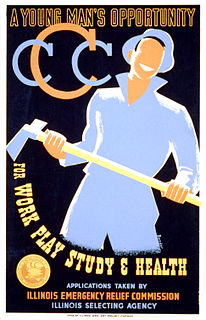
The Civilian Conservation Corps (CCC) was a voluntary public work relief program that operated from 1933 to 1942 in the United States for unemployed, unmarried men ages 18–25 and eventually expanded to ages 17–28. Robert Fechner was the first director of this agency, succeeded by James McEntee following Fechner's death. The CCC was a major part of President Franklin D. Roosevelt's New Deal that provided manual labor jobs related to the conservation and development of natural resources in rural lands owned by federal, state, and local governments. The CCC was designed to provide jobs for young men and to relieve families who had difficulty finding jobs during the Great Depression in the United States. Maximum enrollment at any one time was 300,000. Through the course of its nine years in operation, three million young men participated in the CCC, which provided them with shelter, clothing, and food, together with a wage of $30 per month.
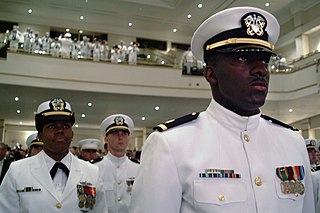
The Reserve Officers' Training Corps (ROTC) is a group of college- and university-based officer training programs for training commissioned officers of the United States Armed Forces.

Physical education, also known as Phys Ed., PE, gym, or gym class, and in some Commonwealth countries as physical training or PT, is a class that pupils are required to take at school. It is taken during primary and secondary education and encourages psychomotor learning in a play or movement exploration setting to promote health and physical fitness.

The Virginia Tech Corps of Cadets (VTCC) is the military component of the student body at Virginia Polytechnic Institute and State University. Cadets live together in residence halls, attend morning formation, wear a distinctive uniform, and receive an intensive military and leadership educational experience similar to that available at the United States service academies. The Corps of Cadets has existed from the founding of the Virginia Agricultural and Mechanical College in 1872 to the present-day institution of Virginia Tech, which is designated a senior military college by federal law. According to program staff, about 1400 students participate as of September, 2018.

The United States Naval Reserve , better known as the WAVES, was the women's branch of the United States Naval Reserve during World War II. It was established on July 21, 1942 by the U.S. Congress and signed into law by President Franklin D. Roosevelt on July 30. This authorized the U.S. Navy to accept women into the Naval Reserve as commissioned officers and at the enlisted level, effective for the duration of the war plus six months. The purpose of the law was to release officers and men for sea duty and replace them with women in shore establishments. Mildred H. McAfee, on leave as president of Wellesley College, became the first director of the WAVES. She was commissioned a lieutenant commander on August 3, 1942, and later promoted to commander and then to captain.

Positive youth development (PYD) programs are designed to optimize youth developmental progress.
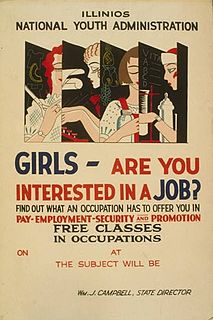
The National Youth Administration (NYA) was a New Deal agency sponsored by the Presidency of Franklin D. Roosevelt in the U.S. that focused on providing work and education for Americans between the ages of 16 and 25. It operated from June 26, 1935 to 1939 as part of the Works Progress Administration (WPA) and included a Division of Negro Affairs headed by Mary McLeod Bethune who worked at the agency from 1936 to 1943. Following the passage of the Reorganization Act of 1939, the NYA was transferred from the WPA to the Federal Security Agency. In 1942, the NYA was transferred to the War Manpower Commission (WMC). The NYA was discontinued in 1943.

The Civilian Pilot Training Program (CPTP) was a flight training program (1938–1944) sponsored by the United States government with the stated purpose of increasing the number of civilian pilots, though having a clear impact on military preparedness.

Air University is a professional military education university system of the United States Air Force. It is accredited by the Commission on Colleges of the Southern Association of Colleges and Schools to award master's degrees.
Whittier Regional Vocational Technical High School, also known as “Whittier Tech” and/or “Big Whittier,” was founded in 1972. Located in the city of Haverhill, MA, United States, the school currently serves about 1400 students, with a 12:1 student-teacher ratio. It serves many surrounding cities and towns primarily in the northern section of Essex County, accepting students from Haverhill, Newburyport, Newbury, West Newbury, Rowley, Amesbury, Merrimac, Georgetown, Groveland, Ipswich, Salisbury, Lawrence and Methuen. The school was named in honor of local resident, Quaker poet, and slavery abolitionist John Greenleaf Whittier. Alongside this school, there is also a middle school called “J. G. Whittier Middle School” located in Haverhill also named after the poet.
Citizen Corps is a program under the Department of Homeland Security that provides training for the population of the United States to assist in the recovery after a disaster or terrorist attack. Each local Citizen Corps Council partners with organizations, volunteers and businesses to organize responders, volunteers and professional first responders for an efficient response so efforts are not wasted by being duplicated. By training in Incident Command, volunteers know whom to report to and how the incident is organized. This prevents sites from being inundated by untrained and unprepared personnel preventing operation. Citizen Corps also works in conjunction with the Corporation for National and Community Service in promoting national service opportunities for promoting homeland security needs.
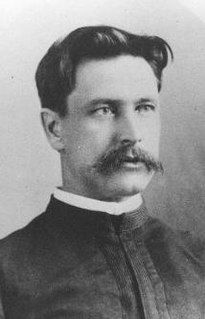
Herman John Koehler was an American football coach, athletics administrator, and United States Army officer. He served as the head football coach at the United States Military Academy from 1897 to 1900, compiling a record of 19–11–3.

In the Dominican Republic, education is free and compulsory at the elementary level, and free but non-mandatory at the secondary level. It is divided into four stages:
HealthCorps is an American nonprofit organization that provides school-based and organizational health education and peer mentoring in addition to community outreach to underserved populations. Its mission is to strengthen communities by highlighting innovative approaches to health and wellness to build resilience in America's youth. Students learn life-saving skills in nutrition, fitness and mental resilience as well as hands-on CPR training, organ donation and more.
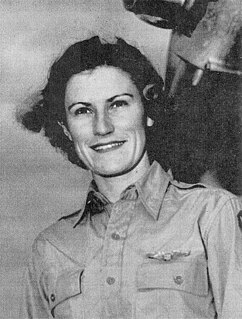
Iris Cummings, also known by her married name Iris Critchell, is an American aviator and former competition swimmer who represented the United States at the 1936 Summer Olympics in Berlin, Germany. After an active athletic career in swimming, which included a reign as U.S. national 200-meter breaststroke champion from 1936 to 1939, she was accepted into the University of Southern California's first Civilian Pilot Training Program in 1939. After graduation, she worked as a flight instructor prior to being selected to serve her country during World War II as a member of the Women's Auxiliary Ferrying Squadron (WAFS) and Women Airforce Service Pilots (WASP). Following the conflict, she returned to California, where she developed and taught a curriculum on civilian flight for veterans returning from the war at the University of Southern California.
Naval Air Technical Training Center Ward Island is a decommissioned United States Navy base located on Ward Island, just offshore from Corpus Christi, Texas. During World War II (WWII), this base provided highly classified airborne electronics maintenance training for many thousands of Navy, Marine, Coast Guard, and Royal Air Force personnel.
The Electronics Training Program (ETP) was the name commonly used for an unusual, difficult, and selective training activity of the United States Navy during World War II (WWII).

The Junior Reserve Officers' Training Corps is a federal program sponsored by the United States Armed Forces in high schools and also in some middle schools across the United States and at US military bases across the world. The program was originally created as part of the National Defense Act of 1916 and later expanded under the 1964 ROTC Vitalization Act.
Katharine Jane Densford (1890–1978) was an American nurse who made important contributions to nursing education and to nursing services during World War II. Densford was Director of the University of Minnesota School of Nursing, serving in that position from 1930 to 1959. Densford’s leadership of Minnesota’s flagship school of nursing, located in the Minneapolis-Saint Paul area provided the model for nursing education throughout the state and nation. Her pragmatic leadership during World War II made a significant contribution to the United States war effort.

The American Schools at War program was a program during World War II run by the U.S. Treasury department, in which school children set goals to sell stamps and bonds to help the war effort. The program was also administered by the U.S. Office of Education, which was the Federal government agency that interfaced with the nation's school systems and its thirty-two million students. The office however allowed the Treasury to work with the schools directly as the main objective of the program was raising money.














